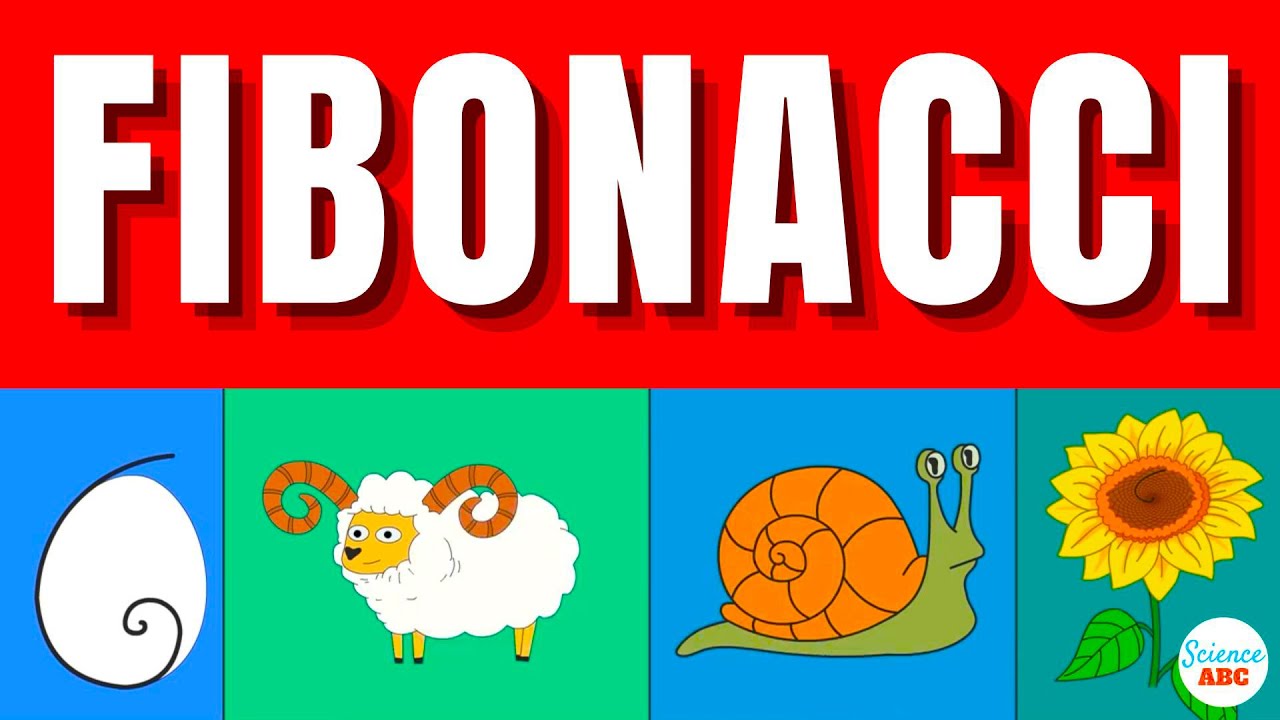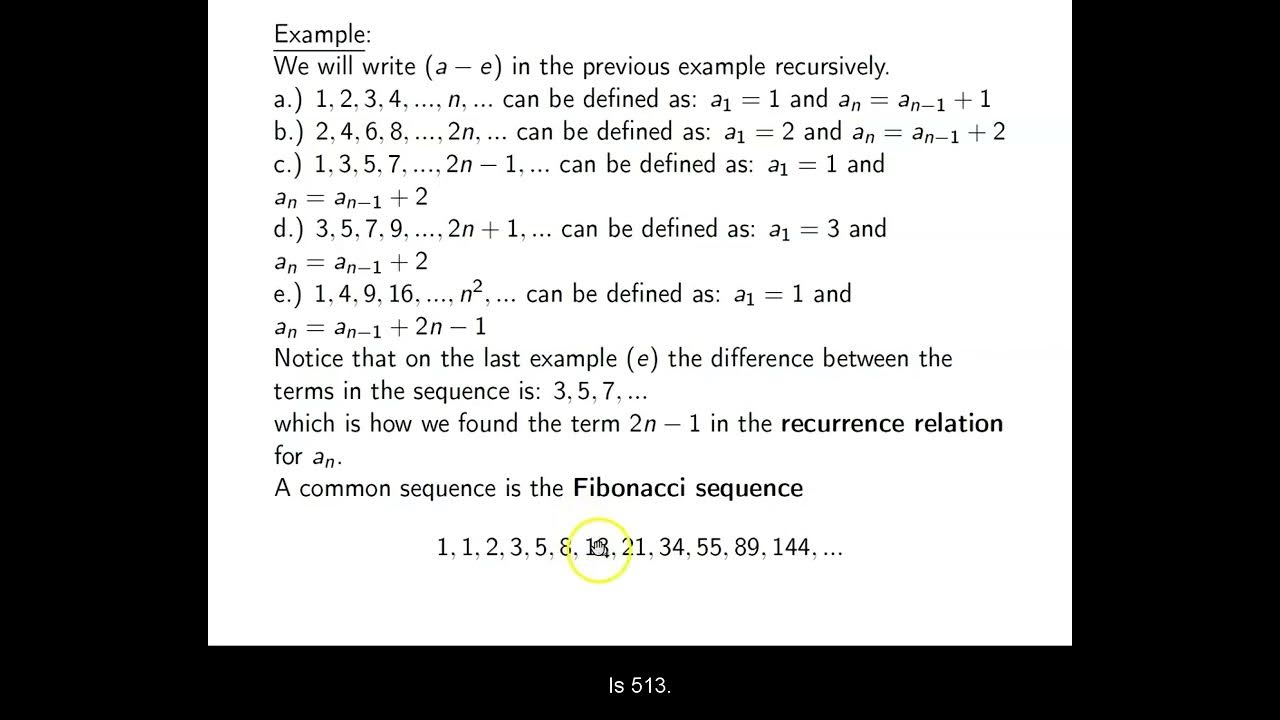Fibonacci Tutorial
TLDRThis tutorial video guides viewers through the process of drawing a Fibonacci spiral, a geometric pattern found in nature. It requires basic tools like a ruler, pencil, compass, and square paper. The video begins by explaining the Fibonacci sequence, a series of numbers where each term is the sum of the previous two. Following this, the steps to draw the squares representing the sequence on paper are demonstrated, emphasizing accuracy for a neat outcome. The climax of the video is drawing the spiral itself using a compass, starting from the corners of the squares and working inwards to create the spiral's elegant curves. The final spiral serves as a foundation for further artistic endeavors, showcasing the beauty and utility of the Fibonacci sequence in art.
Takeaways
- 📏 To draw a Fibonacci spiral, you'll need a ruler, a pencil, a compass, and square paper.
- ✏️ Start by understanding the Fibonacci sequence, which is generated by adding the previous two numbers to find the next one.
- 📐 Begin drawing on square paper, starting with a 1x1 square and then drawing subsequent squares based on the Fibonacci sequence (1, 1, 2, 3, 5, 8, 13, 21...).
- 🔍 Ensure accuracy for the spiral to look neat and precise.
- 📏 Use a ruler to draw the sides of the squares, as they must be straight and aligned.
- 📏 The sequence continues with no rectangles, only squares, so any rectangle shape indicates a miscalculation.
- 🖊️ After drawing the squares, use a compass to start drawing the spiral from the outside and work inwards.
- 🌀 The spiral should be drawn by turning the compass on its side and drawing smooth arcs that connect the corners of the squares.
- 🎨 The spiral drawing can be used as a basis for creating more complex artwork incorporating the Fibonacci spiral.
- ✒️ Once the spiral is drawn with a pencil, you can go over it with a pen for a clearer and more defined appearance.
Q & A
What is the Fibonacci sequence and how is it calculated?
-The Fibonacci sequence is a series of numbers where each number is the sum of the two preceding ones, usually starting with 0 and 1. It is calculated by adding the previous two terms together to find the next term, for example: 0, 1, 1, 2, 3, 5, 8, 13, 21, and so on.
What materials are needed to draw a Fibonacci spiral according to the video?
-To draw a Fibonacci spiral, you will need a ruler, a pencil, a compass, square paper, and possibly a rubber for corrections.
How does the video guide the process of drawing the Fibonacci spiral on square paper?
-The video instructs to first draw squares based on the Fibonacci sequence, starting with 1 square, then 2, 3, 5, 8, 13, and 21, ensuring accuracy for a neat spiral. After drawing the squares, the spiral is drawn using a compass, starting from the outside and working inwards.
Why is accuracy important when drawing the squares for the Fibonacci spiral?
-Accuracy is important to ensure that the spiral looks neat and accurate. Any miscalculation or misalignment can lead to rectangles instead of squares, which would be a mistake in the context of the Fibonacci sequence.
What is the significance of using square paper for the Fibonacci spiral drawing?
-Square paper is used because it provides a grid that helps in accurately placing the squares corresponding to the Fibonacci sequence, which is essential for the correct formation of the spiral.
How does the video suggest drawing the spiral part of the Fibonacci spiral?
-The video suggests using a compass to draw the spiral, starting from the corner of the square and drawing arcs that connect the corners of the squares in the Fibonacci sequence, working from the outside in.
What happens if you see a rectangle instead of a square in the Fibonacci spiral drawing process?
-If a rectangle is seen instead of a square during the drawing process, it indicates a miscalculation or mistake in the placement of the squares based on the Fibonacci sequence.
Why might the process become more difficult as the squares get smaller?
-As the squares get smaller, the process becomes more difficult because it requires more precision to draw the arcs of the spiral accurately, especially when using a compass.
What is the purpose of using a ruler when drawing the larger squares in the Fibonacci sequence?
-A ruler is used to ensure straight lines when drawing the larger squares, which is important for maintaining the correct proportions and formation of the Fibonacci spiral.
How does the video suggest finishing the spiral drawing?
-The video suggests finishing the spiral by carefully drawing the arcs for the smaller squares, and if necessary, manually drawing the final curve with a pencil to complete the spiral shape.
What is the potential use of the Fibonacci spiral once it is drawn according to the video?
-The Fibonacci spiral can be used as the basis for creating more artwork, which can incorporate the spiral's aesthetic properties in various artistic designs.
Outlines
📏 Drawing the Fibonacci Spiral
This paragraph explains the process of drawing a Fibonacci spiral using a ruler, pencil, compass, and square paper. It begins by defining the Fibonacci sequence and how it is calculated by adding the previous two terms. The speaker then demonstrates how to draw squares on the paper corresponding to the sequence's numbers, starting with 1 and increasing to 21, ensuring accuracy for a neat result. The explanation includes the importance of using square paper and avoiding rectangles, which would indicate a miscalculation.
🌀 Creating the Spiral with a Compass
The second paragraph details the steps to draw the Fibonacci spiral itself. The process involves using a compass to create arcs that connect the corners of the squares drawn in the previous step. The speaker advises starting from the outside and working inwards for ease, and emphasizes the importance of accuracy to maintain the spiral's shape. As the squares decrease in size, the drawing becomes more intricate. The paragraph concludes with the suggestion to finish the smallest arcs by hand for precision and then to trace over the pencil lines with a pen for clarity. The completed spiral serves as a foundation for further artwork incorporating the Fibonacci sequence.
Mindmap
Keywords
💡Fibonacci Spiral
💡Fibonacci Sequence
💡Square Paper
💡Ruler
💡Compass
💡Pencil
💡Rubber
💡Accuracy
💡Artwork
💡Graph Paper
💡Rectangles
Highlights
Introduction to the process of drawing a Fibonacci spiral.
List of materials needed: ruler, pencil, compass, square paper, and possibly a rubber.
Explanation of the Fibonacci sequence calculation by adding the previous two terms.
Demonstration of the Fibonacci sequence starting with 0 and 1.
Use of square paper to draw the Fibonacci sequence in a grid format.
Drawing the first square of the sequence accurately to ensure neatness.
Sequential drawing of squares corresponding to the Fibonacci numbers 1, 2, 3, 5, and 8.
Importance of using a ruler for drawing larger squares in the sequence.
Drawing the 13 and 21 squares, noting the increasing size and complexity.
Emphasis on avoiding rectangles and ensuring all figures are squares for accuracy.
Starting the spiral drawing with a compass placed at the corner of the square.
Technique of drawing the spiral from the outside towards the center.
Method of using the compass to create smooth arcs for the spiral.
Challenge of drawing smaller arcs with precision as the squares decrease in size.
Finishing the spiral by hand for the smallest squares due to compass limitations.
Using the completed Fibonacci spiral as a basis for further artwork creation.
Final presentation of the completed Fibonacci spiral ready for artistic applications.
Transcripts
Browse More Related Video

The fabulous Fibonacci flower formula

The Fibonacci Sequence: Nature's Code

The Fibonacci Sequence and the Golden Ratio

What is the Fibonacci Sequence & the Golden Ratio? Simple Explanation and Examples in Everyday Life

ILLUSTRATING SEQUENCES AND SERIES || PRECALCULUS

Ch. 12.1 Sequences and Summation Notation
5.0 / 5 (0 votes)
Thanks for rating: